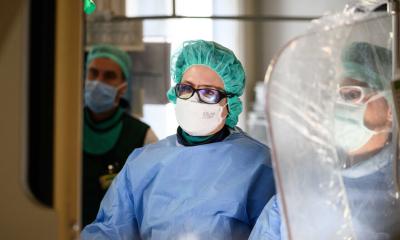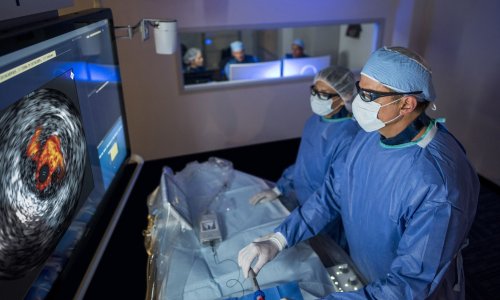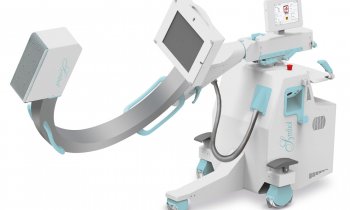20 years of MIS
By Professor Ferdinand Köckerling MD, President of the DGVC, Head of the Clinic for Surgery, Visceral and Vascular Surgery, at the Centre for Minimal Invasive Surgery, Vivantes Hospital Spandau, Berlin
Scientific studies confirm that after 20 years of minimally invasive surgery (MIS) most of these operations have advantages over the equivalent, conventional surgical procedures.

For example, minimally invasive removal of the gall bladder, the method chosen in Germany for about 85% of cases, results in less pain and a shorter hospital stay by comparison, even if the conventional removal is performed with only a very small incision. Endoscopic appendix removal compared to the conventional surgical procedure also involves less pain, shorter hospital stay and earlier return to full activity. Due to the lower rate of complications even in complicated cases, this also means lower treatment costs for endoscopic appendix removal. Despite this, minimally invasive appendix removal is currently only performed in around 50% of cases, because an experienced surgical team is not always available, particularly at night and during weekends.
Meta-analysis shows that endoscopic hernia operations carry lower risks of wound infection, fewer haematomas and injuries to nerves and earlier return to normal activity for the patient. The same rates of success also apply to bilateral hernia operations, which occur in up to 30% of cases. Despite these advantages only around 35% of hernia operations are carried out in Germany with MIS — again due to the lack of highly trained surgeons in MIS.
The majority of laparoscopic fundoplication procedures for reflux are now carried out minimally invasively. 10 years after minimally invasive fundoplication, the quality of life for patients is significantly better than that achieved with medicinal therapy. The use of MIS for tumour removal must still be viewed with criticism, although it has now been proven that, for patients with cancer of the large intestine, endoscopic surgery can achieve comparatively good long term results if the right patients are chosen for the procedure.
The key problem for the further MIS development is the long learning curve, i.e. surgeons need to have performed a certain endoscopic operation very frequently until they have mastered it in all situations. To meet this requirement the Surgical Working Group for Minimally Invasive Surgery (CAMIC) of the German Society for Visceral Surgery (DGVC) has instigated certification procedures for surgeons and reference centres. These certificates are only awarded if a surgeon or a hospital meets certain conditions (case numbers, equipment, training) and passes an audit by experts. As the responsible scientific associations, the DGVC and the CAMIC hope for quality assurance and quality improvements in training and therapy for the benefit of patients.
01.07.2008











